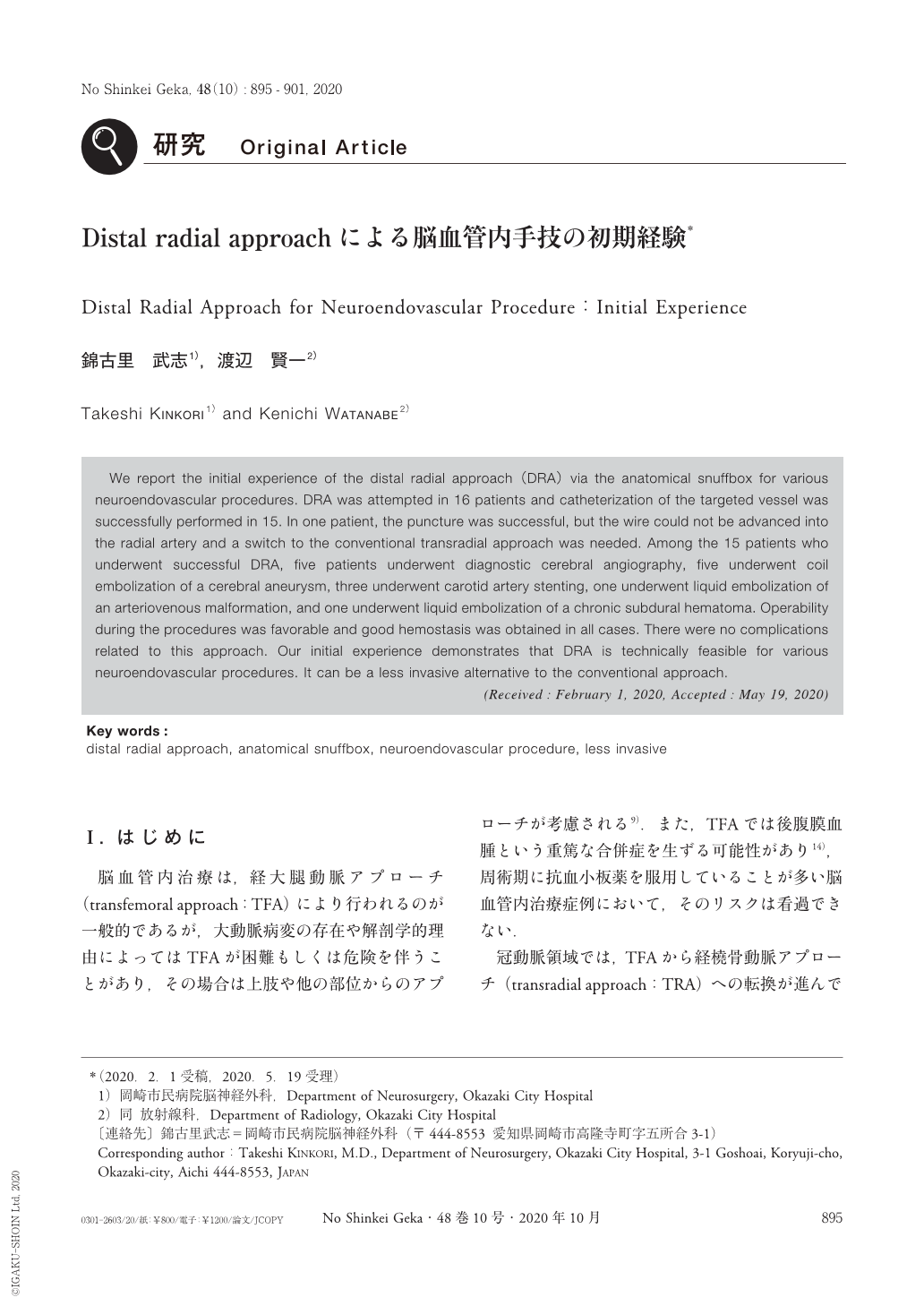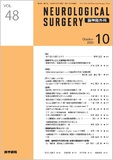Japanese
English
- 有料閲覧
- Abstract 文献概要
- 1ページ目 Look Inside
- 参考文献 Reference
Ⅰ.はじめに
脳血管内治療は,経大腿動脈アプローチ(transfemoral approach:TFA)により行われるのが一般的であるが,大動脈病変の存在や解剖学的理由によってはTFAが困難もしくは危険を伴うことがあり,その場合は上肢や他の部位からのアプローチが考慮される9).また,TFAでは後腹膜血腫という重篤な合併症を生ずる可能性があり14),周術期に抗血小板薬を服用していることが多い脳血管内治療症例において,そのリスクは看過できない.
冠動脈領域では,TFAから経橈骨動脈アプローチ(transradial approach:TRA)への転換が進んでおり,重篤な穿刺部合併症は減少しているが5,12),近年,従来のTRAよりさらに遠位であるanatomical snuffboxからアプローチする遠位橈骨動脈アプローチ(distal radial approach:DRA)が行われており,注目を集めている6).Anatomical snuffboxは手関節部橈背側の凹みで,外側を長母指伸筋腱,内側を短母指伸筋腱および長母指外転筋腱に囲まれており,この中を橈骨動脈のdeep palmar branchが走行しており(Fig.1),DRAはこれを穿刺してアプローチする方法である.
われわれは,2018年9月から一部の脳血管内手技に対してDRAを応用しており,本稿ではその初期経験について報告する.
We report the initial experience of the distal radial approach(DRA)via the anatomical snuffbox for various neuroendovascular procedures. DRA was attempted in 16 patients and catheterization of the targeted vessel was successfully performed in 15. In one patient, the puncture was successful, but the wire could not be advanced into the radial artery and a switch to the conventional transradial approach was needed. Among the 15 patients who underwent successful DRA, five patients underwent diagnostic cerebral angiography, five underwent coil embolization of a cerebral aneurysm, three underwent carotid artery stenting, one underwent liquid embolization of an arteriovenous malformation, and one underwent liquid embolization of a chronic subdural hematoma. Operability during the procedures was favorable and good hemostasis was obtained in all cases. There were no complications related to this approach. Our initial experience demonstrates that DRA is technically feasible for various neuroendovascular procedures. It can be a less invasive alternative to the conventional approach.

Copyright © 2020, Igaku-Shoin Ltd. All rights reserved.


